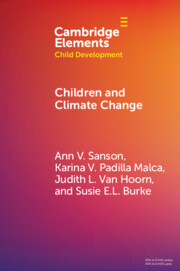Element contents
Children and Climate Change
Published online by Cambridge University Press: 25 August 2022
Summary
- Type
- Element
- Information
- Series: Elements in Child DevelopmentOnline ISBN: 9781009118705Publisher: Cambridge University PressPrint publication: 22 September 2022



